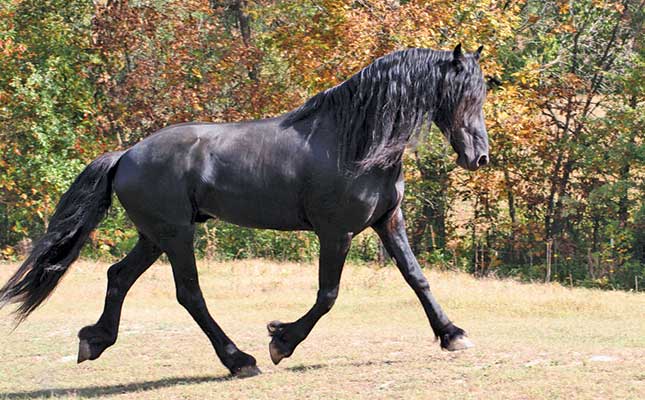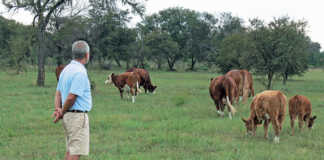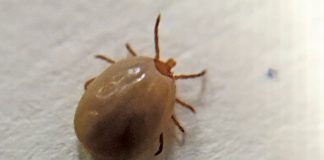
Photo: Wikimedia Commons
The word ‘conformation’ refers to the basic structure of an animal, which is linked mainly to the way the bones in the skeleton are arranged. In the case of horses, each breed has a defined conformation linked to the purpose for which that breed is (or was) used. Arabians, for example, originate in hot desert areas where they were expected to carry warriors rapidly over long distances with a minimum of water and feed.
The defined structure of an Arabian horse includes very hard, dense bones and a short back (one less lumbar vertebra than other breeds). These bones are attached to strong muscles containing very little fat, which is ideal for hot climates. This conformation enables the Arabian to move fast in deep sand and over rocky ridges, while carrying a rider of up to one-third of its body weight.
Its shoulders are markedly sloped to allow for long strides, while its neck is highly mobile and arched, so that it can look down at a gallop to judge the nature of the going and balance itself and its rider.
By contrast, heavy draught horses from Europe were designed to pull ploughs and wagons slowly through very deep mud and survive icy winters.
The typical draught horse has strong muscles attached to much spongier bones than those of the Arabian, and the muscles contain more fat to keep the animal in winter. It is built to pull, rather than carry, a rider; its vertebral column is longer (six lumbar vertebrae) to increase the attachments of the strong back muscles on each side. Its shoulders are more upright, as its stride is shorter. The neck is set low to make pulling easier, and the hip bones are sloped, so that the pulling power comes from behind.
Most modern breeds come from a combination of these two examples, with modifications so that their conformation is ‘fit for purpose’. For example, Friesian and American Saddle horses have the high necks, long shoulders and flattened hindquarters needed for their high- stepping gaits.
American Quarter Horses have the powerful quarters needed to hold on to a bucking steer, with the long shoulders needed for racing speed, plus the fat required for cold winters.
A question of balance
Balanced conformation means that the two sides of a horse can take weight evenly. All four legs are straight, and all joints in the front legs (elbow, carpus, fetlock, pastern and hoof) are correctly and smoothly aligned, so that the movement on each front leg is exactly the same as that of the opposite leg. The same applies to all the joints of each hind leg (hip, stifle, hock, fetlock, pastern and hoof).
Imbalances in movement lead to poor performance, injuries, and greater wear and tear. They reduce the number of years a horse stays sound enough to keep on working. Having said that, it is almost impossible to find a perfectly balanced horse.
Breeding performance
Breeding can be highly frustrating. A top racing stallion may be gelded, or a winning filly may turn out to be infertile. Selecting horses with balanced conformation usually predicts success, and breeding from these horses should result in a new generation of good horses.
However, a breeder also needs foals, so should select balanced, functional reproductive conformation in breeding stock.
The functional conformation of a breeding stallion should result in fertile semen. A brood mare needs to become pregnant, carry a foal to term and feed that foal to weaning.
Dr Mac is an academic, a practising equine veterinarian and a stud owner.











